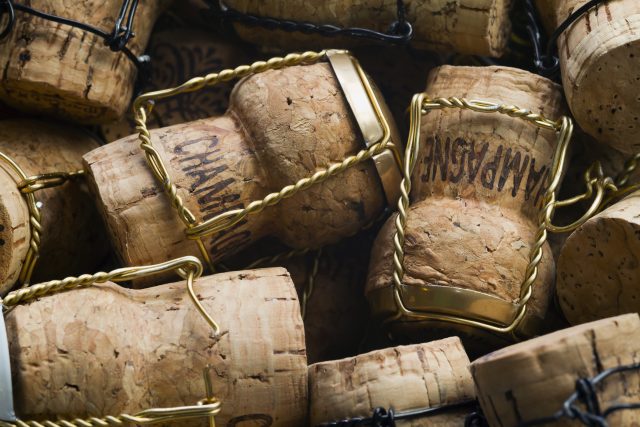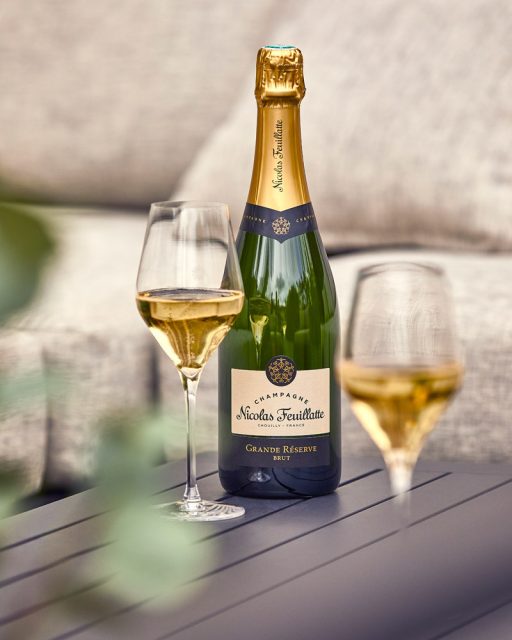This website uses cookies so that we can provide you with the best user experience possible. Cookie information is stored in your browser and performs functions such as recognising you when you return to our website and helping our team to understand which sections of the website you find most interesting and useful.
Why did Champagne shipments fall by 27m bottles in 2023?
After a boom year in 2022, Champagne shipments fell by more than 27 million bottles to slip just below a symbolic 300m total in 2023 – but why?

That was the question I put to several of the leading producers in Champagne during five days in the region after news surfaced that shipments for 2023 had totalled 298.7m, representing an 8.2% decline compared to 2022, when the year-end figure was 326m.
While the causes are myriad, three key reasons were repeatedly cited, from inflation, to overstocking and falling consumer confidence, which I’ve looked at in more detail below.
Initially it should be stated that while Champagne has shrunk in size, the drop has almost entirely been in terms of volume, with the global market for this famous fizz remaining close to its peak point in terms of turnover.
As the Champenois are at pains to point out, although the region suffered a drop in the number of bottles shipped, the value of those shipments was similar to the record set in 2022, with Comité Champagne co-president David Chatillon telling db that turnover has been almost stable, mentioning a decline of around 1.5% to €6.2bn in 2023 (from the previous year’s peak of €6.3 billion).
Nevertheless, when it comes to volumes, the drop was marked, and, even though all the major players in Champagne told db that they were expecting a decline after 2022’s bumper figure, many expressed disappointment that the total should have fallen below 300m bottles.
Indeed, when yields were set in July last year, it was expected that Champagne would ship above 310m bottles by the end of 2023, with db reporting at that time a forecasted figure of 314m for the year-end, following news that shipments were down around 4% for the first six months of 2023 versus the same period in 2022.
However, there was a sharp decline in demand for Champagne from the worldwide trade in the final few months of 2023, particularly November, as customers chose to run down stocks rather than ship more fizz from the sparkling wine appellation.
Signs of a consumer-slowdown in Champagne consumption were evident in the rising intensity of price promotions in the run up to Christmas – even among leading grandes marques – as we identified on 1 December in UK retailers.
As Champagne Joseph Perrier director Benjamin Fourmon told db last week, “We kept expecting a correction after the boom in demand from 2021, but then it happened so quickly; we didn’t expect such a violent stop in sales, and that’s why some of the big groups quickly adopted a strategy of promotions to protect the volumes.”
One key cause of the Champagne slowdown is undoubtedly inflation, which has affected the cost of all goods, including Champagne, which has become significantly more expensive.
As Champagne Lanson president François Van Aal told db, “all the major houses increased prices in early 2023”, recording “big” rises of between 10-12%, which he stressed, “were necessary because of the cost of grapes, which went up 10% in 2022”.
But it’s not just the price of the raw material that’s risen for the Champenois, with producers also having to face rising interest rates in 2023, from around 0.7% the year before to 3.5 to 4% in 2023, which Van Aal said is “a huge cost because we finance our stocks.”
Other pressures have affected prices too, with the cost of dry goods rising sharply in 2022 due to post-Covid supply pressures and the war in Ukraine, along with increasingly expensive energy – which Van Aal said was 2.5 times higher at Lanson this year – and increasing staff salaries, were went up 5.8% for all Lanson employees in 2023.
In short, he said, “The cost of making Champagne has never been as high,” and, bearing in mind that fact that “Champagne is not an essential product”, as well as one facing stronger competition from other drinks, demand from consumers worldwide has softened.
“People are being more careful what they buy,” he said.
It’s worth adding that 2023 not only saw rising prices of Champagne at a time when consumer spending power was declining, but also a fall-off in the supply of entry-point Champagne to major retailers – the type of labels that sold for sub-€19 in French supermarkets.
Champagne Philipponnat president Charles Philipponnat said that a raft of the cheapest Champagne brands for the domestic market were now retailing for more than €20 a bottle, commenting, “which has had an effect on sales”.
Indeed, Champagne Nicolas Feuillatte CEO Christophe Juarez told db that 2023 had seen the discontinuation of the brand’s base level Brut Sélection and launch of a more premium Grande Réserve, resulting in a 25% decrease in sales volumes for what is France’s best-selling Champagne, with a 40% share of Champagne sales in the country’s retail sector.
“We decided to reboot our strategy in the off-trade and premiumise our offer, which meant a 15-20% increase in our price position, as we moved from the bracket of less than €19 a bottle to €24,” Juarez recorded.
Similarly, Stanislas Thienot, who is the managing director of Arvitis – which owns a number of marques, including Canard-Duchêne – told db that his group’s volumes were down by “almost 20%” in 2023 following a decision to axe an entry-point label in the domestic retail sector.
“We made the decision to stop selling Champagne Marie Stuart in France, where it was only sold in supermarkets and retailed for around €17,” he said, telling db that this move involved losing almost 500,000 bottles in sales (while noting that the overall amount of Champagne sold in French supermarkets dropped from 35m bottles in 2022 to 27.4m last year).
Explaining his decision regarding the domestic distribution of Marie Stuart, he said, “We prefer to keep our grape sourcing to supply a brand with more value,” before noting that the combination of the rising expense of grapes, interest rates, labour, energy and glass had pushed up the cost of Champagne production by 30-35%.

Overstocking of Champagne in its major markets has been cited as the second main reason for the decline in shipments worldwide in 2023 – which fell at similar rates in France and export countries last year, with domestic and international customers representing 43% and 57% of the total respectively.
After a rapid rebound in Champagne demand in 2021, followed by booming consumption in 2022, producers in the French sparkling wine region had found themselves struggling to meet the demand, forcing them to restrict supplies to the trade starting around two years ago.
In such a situation, major importers, retailers and customers of Champagne had put in large orders towards the end of 2022, fearful of future scarcity, with shipments to markets such as the US and Australia being especially large at this time.
However, as Van Aal recorded, “A lot of orders were more than were needed, so there was a bit of overstock in January 2023,” which meant fewer and smaller orders in the past year. Exacerbating this trend has been higher interest rates, feeding a desire among trade customers to hold as little Champagne as possible.
The final major cause of declining shipments volumes has been a changing in consumer mindset, with last year’s geopolitical situation hardly proving conducive to clinking glasses of fizz.
Nevertheless, Van Aal believes that it would be wrong to suggest that 2023 was “not a good year” for Champagne, pointing out that shipments for the appellation have ranged between 300m and 330m for the past 20 years, while last year’s turnover is near to the record of €6.3bn set in 2022.
“In terms of value, Champagne is really stable, which is due to price increases, as well as more value in the country mix and the market mix,” he concluded.
Or, in the words of Champagne Taittinger president Vitalie Taittinger, “Our policy is to develop Champagne through value and excellence, and more and more we are achieving that; we sell less but sell better.”
Read more
Champagne shipments fall to pre-covid levels
Will Champagne see a return to growth in 2024?

